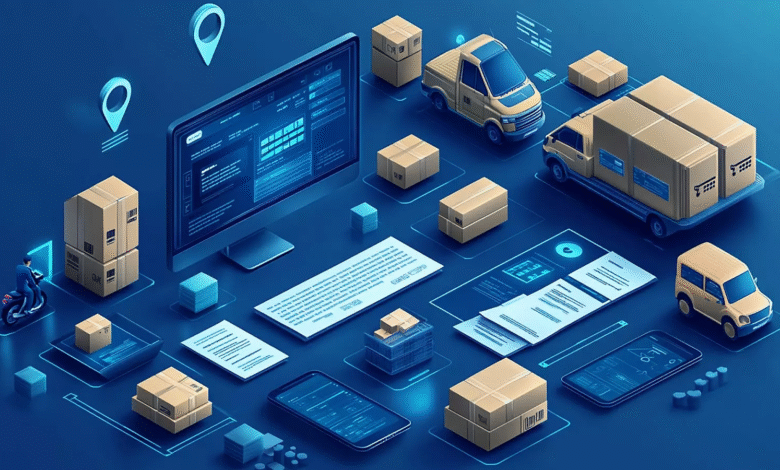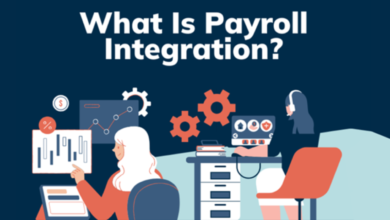How Purchase Order Solutions Empower Businesses

Companies across industries constantly seek ways to streamline operations and fuel growth. Implementing effective purchase order solutions helps businesses manage procurement more efficiently, control costs, and scale operations. These systems help manage the procurement process, keeping spending in check while supporting business growth.
To support larger contracts without upfront capital, many businesses now rely on purchase order financing as a core part of their procurement strategy. This financial approach allows companies to take on big contracts without needing the cash upfront. As businesses deal with more complex supply chains and customer demands, the right purchase order solutions can turn potential opportunities into real growth.
What Are Purchase Order Solutions?
Purchase order solutions help businesses create, manage, and track purchase orders across their lifecycle, from creation to fulfillment. These solutions can be simple spreadsheets or advanced software programs that automate much of the process. They help businesses keep track of what they’ve ordered, what they’ve received, and what they’ve paid for.
Modern purchase order solutions often include features like:
- Digital purchase order creation
- Approval workflows
- Order tracking
- Supplier management
- Budget controls
- Reporting tools
For growing businesses, purchase order financing complements these solutions by removing capital constraints from the order fulfillment process. The financing company pays the supplier directly, allowing the business to complete the order. Once the customer pays, the business repays the financing company and keeps the remaining profit.
Benefits of Using Purchase Order Solutions
Better Cash Flow Management
One of the biggest challenges for businesses is managing cash flow. Purchase order solutions help by giving clear visibility into upcoming expenses and payment timelines. Purchase order financing plays a crucial role here by providing businesses with the funds they need without requiring immediate payment. This means businesses don’t always need to pay suppliers upfront from their own reserves.
Purchase order financing, often integrated within broader supply chain strategies, ensures suppliers are paid promptly while buyers maintain cash reserves. For instance, a small clothing brand might receive a $200,000 order from a retail chain but only have $40,000 available to pay their fabric supplier. With purchase order financing, they can secure the needed funds, fulfill the order, and repay the financing company after receiving payment from the retailer.
Faster Order Fulfillment
Digital purchase order solutions speed up the entire ordering process. With automated approvals and instant communication with suppliers, businesses can reduce delays and get products faster. Take, for example, a food distributor that cut order processing time from 5-7 days to just 1-2 days after switching to a cloud-based purchase order solution. This improvement allowed them to take on more customers and respond faster to market demands.
Stronger Supplier Relationships
When businesses use good purchase order solutions, they communicate better with suppliers. Clear purchase orders with detailed specifications reduce misunderstandings. Additionally, when businesses can pay on time thanks to purchase order financing, suppliers trust them more. For example, a home appliances company uses a purchase order system with vendor financing. This helps them place regular orders even during slow seasons. As a result, suppliers offer better prices and faster service.
Improved Inventory Management
By providing real-time visibility into incoming inventory, purchase order solutions enable better planning, reduce stockouts, and align inventory levels with demand forecasts. For example, a bookshop owner uses a purchase order system that tracks order history. This helps her predict demand during busy seasons, restock in advance, and get alerts when stock runs low.
Fewer Manual Errors
Manual purchase order processes are prone to errors like incorrect quantities, wrong items, or pricing mistakes. Automated purchase order solutions reduce these errors through standardized forms and data validation. For example, a logistics company uses automated purchase order software to reduce invoice mismatches. This cuts errors and saves hours that were earlier spent fixing disputes.
Choosing the Right Purchase Order Solution
When selecting a purchase order solution for your business, consider these important features:
- Automation capabilities: Look for solutions that automate repetitive tasks like order creation, approval routing, and supplier notifications.
- Real-time tracking: The ability to see the status of all purchase orders at any moment helps with planning and problem-solving.
- Finance integration: Choose a solution that connects with your accounting system and offers options for purchase order financing.
- Cloud access: Cloud-based solutions allow team members to access information from anywhere, which is especially important for businesses with multiple locations.
- Supplier connectivity: The best solutions make it easy to communicate with suppliers directly through the platform.
- User-friendly interface: If a system is hard to use, teams may bypass it, undermining its effectiveness.
Remember that the right solution should grow with your business and adapt to your changing needs. A system that works well for a small business might not be suitable once that business expands to multiple locations or international markets.
Conclusion
Purchase order solutions streamline procurement, reduce costly errors, and strengthen supplier relationships. When paired with purchase order financing, they empower businesses to pursue larger opportunities without sacrificing liquidity, driving measurable growth.
For businesses looking to improve their operations and financial health, implementing a good purchase order solution should be a priority. The initial investment in time and resources is quickly repaid through improved efficiency, better cash flow management, and stronger business relationships.
FAQs
What is purchase order financing?
It’s a funding method where a third party pays your supplier based on your purchase order, helping you fulfill large orders without having upfront capital. The financing company is repaid when your customer pays for the delivered goods or services.
How do purchase order solutions benefit small businesses?
They simplify order tracking, reduce mistakes, and offer financing access to take on larger deals. Small businesses particularly benefit from improved cash flow management and the ability to compete for bigger contracts.
Is vendor financing part of purchase order systems?
Yes, vendor financing lets suppliers offer flexible payment terms to buyers, often managed through purchase order tracking tools. This arrangement benefits both parties by ensuring steady business for suppliers and better cash flow for buyers.
How can purchase order solutions reduce delivery delays?
By automating approvals and communication, businesses can process orders faster and meet deadlines more easily. The system can also provide early warnings about potential delays, allowing businesses to take corrective action.
What’s the difference between purchase order financing and supply chain finance?
Purchase order financing is used for specific orders, while supply chain finance solutions cover a wider range of payment and cash flow tools for the full supply chain. Supply chain finance might include invoice factoring, dynamic discounting, and other financial instruments that benefit multiple parties in the supply network.




